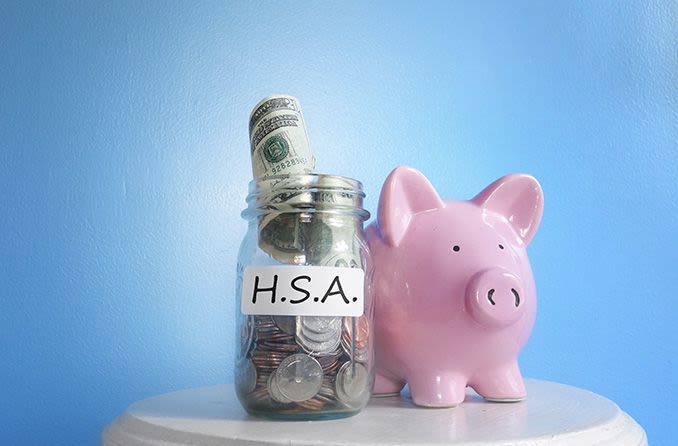What can I spend my HSA on?

A health savings account (HSA) provides an excellent way to save money on a wide variety of health and medical expenses not fully covered by a high-deductible health plan (HDHP) — including eyeglasses, contact lenses and prescription sunglasses.
With an HSA, you can set aside pre-tax income in a federally insured savings account that you can draw upon to pay for health and medical expenses.
Your HSA can cover your health insurance deductible costs and other qualified medical expenses. Plus, your HSA funds don’t have to be used before the end of the year. They roll over into the following year and will keep accumulating interest.
Setting up an HSA can be a smart financial decision and make it easier to ensure that you and your family will have access to the care you need.
How does an HSA work?
An HSA is like a standard interest-bearing savings account. Funds you contribute are tax-deductible with tax-free interest — as long as they are spent on qualified medical expenses.
In 2021, individuals can contribute up to $3,600 per year to an HSA, and families can contribute up to $7,200. People who are 55 and older are allowed an additional $1,000 in contributions.
Once you’ve set up your account, you can decide how much to contribute. It’s common to contribute a set amount each month, and many plan administrators also accept lump-sum deposits.
Most HSAs issue debit cards or checks that can be used to pay for qualified medical expenses. Some also offer online bill payment options.
SEE RELATED: Can I carry over HSA money?
What can I pay for with my HSA funds?
Funds must be spent on qualified medical expenses and can be used to pay for expenses not covered by your health insurance.
The Internal Revenue Service has guidelines defining qualified medical expenses, which include costs toward diagnosis, treatment or prevention of any illness or disease affecting any part of the body, including vision care.
Vision services and products covered by an HSA include:
Eyeglass lenses
Prescription lenses, bifocals and progressive lenses are covered. You can also choose safety lenses or sports protection lenses, as well as UV-protective, photochromic lenses (such as Transitions) and polycarbonate lenses.
Sunglass lenses
Prescription sunglass lenses come in a wide variety of colors and types and are available with polarized, gradient and anti-reflective coatings.
All prescriptions can be accommodated, and some plans may cover non-corrective lenses — especially if a medical condition is causing light sensitivity. Styles specifically designed for sports protection are also an option.
Frames
Today’s eyeglass and sunglass frames are available in a wide variety of materials, styles and colors to suit everyone’s unique face shape, sense of fashion and budget.
Specialty frames are available to provide protection from injury, as well as wear outdoors, in front of the computer or while playing sports.
Contact lenses
Many types of contact lenses are available, including daily wear, extended wear and disposable.
Toric lenses, which correct for astigmatism, and bifocal or multifocal contacts are an option if you have presbyopia.
Accessories
Some HSAs also allow for the purchase of saline solution, contact lens cleaning fluid, eyeglass cleaner, wipes and even protective cases for your eyewear.
Vision surgery
Procedures ranging from cataract removal to glaucoma procedures are usually covered. LASIK and other corrective treatments may be covered as well.
Eye exams and screening
Comprehensive eye exams typically include refraction, as well as screening for glaucoma, cataracts and other potentially serious visual conditions.
Don’t neglect your vision — it’s a vital part of your health. If you’re due for an eye exam, be sure to check with your HSA provider to validate what is covered by your plan.
Page published on Thursday, September 26, 2019




